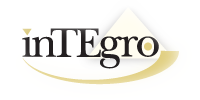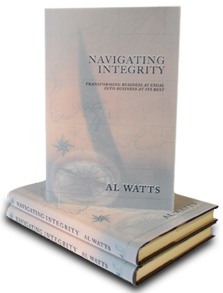Physical therapy following shoulder surgery and back issues gave me a new appreciation for “core strength.” Physiologically, core strength is primarily a function of our abdominal and lower back muscles, pelvis and diaphragm working together to provide support, balance and power when we need it. Core strength isn’t as readily visible as the muscles on “muscle beach;” we notice it more in its absence. Core strength is a large part of power generated in the martial arts; it strengthens our backbone, contributes to a healthy upright posture, and is necessary for dynamic sports. Yoga and isometric exercises are particularly beneficial for developing core strength.
There is a core strength possessed by some leaders and organizations that is comparable on many levels. It is the foundation for their reserve strength and power, contributes to balance, helps them maintain an “upright posture” and conditions them for success in dynamic environments. Like physiological core strength, it requires exercise and conditioning, but we don’t readily notice it other than in its absence. What is this kind of core strength, and how can we get it?
“Core” means at or from the center; like physiological core strength, leadership and organizational core strength also come from their center. Have you noticed how much more confident and powerful you feel when a deep sense of purpose or principles drives your actions? In those cases you are fueled by your core strength; you will likely not be deterred or distracted easily, and will remain committed to a task far beyond would otherwise be the case. In his classic book From Good To Great, Jim Collins labeled an organization’s combination of deep purpose and principles its “core ideology.” His research demonstrated that companies with a strong core ideology, coupled with “adaptive mechanisms,” achieved returns six times higher than their comparison companies and twelve times higher than general stock market returns. Why would that be?
- Most of us are more energized and loyal when working for a cause or purpose beyond just “another day, another dollar.” To be part of an organization committed “to bring inspiration and innovation to every athlete in the world” (Nike’s mission) is more energizing than if the purpose were merely “making athletic equipment” or “maximizing profits for shareholders.”
- A clear purpose and solid values function as beacons attracting like-minded and like-motivated talent; they also serve to screen out those not aligned with an organization’s core ideology. Like any successful sea voyage that will be challenging, it is of primary importance to get the right people in the boat and the wrong people out of it.
- A clear core purpose and solid core values can also serve as a “diving rod” of sorts for market opportunities that are good fits and a red flag for those that are not. For example potential acquisitions or mergers that are disguised as opportunities but don’t fit an organization’s core competencies or unique value proposition aren’t really opportunities. The dustbin of failed mergers and acquisitions is littered with organizations with values and cultures that were mismatches.
- We know that trust significantly impacts relationships with leaders and organizations’ success in their markets. Credibility and trust increase when leaders are who they say they are and do what they say they will do; companies are rewarded by the marketplace when they live up to their brand promise.
- It can be incredibly tempting to cut corners, bend rules or “fudge” on core values when the heat is on. Staying true to purpose and values while meeting competitive challenges and financial pressures hones the same kind of creativity that fuels innovation in general.
- Physiological core strength helps us lift heavy weights, maintain our balance in awkward situations, stretch beyond old limits, marshal bursts of speed or power without injury and maintain an erect posture. The kind of core strength that we’re talking about here essentially does the same for leaders and organizations. “Maintaining an erect posture” in this context is about ethical behavior and sustainability.
Leaders and organizations cannot fake this kind of core strength any more than physiological core strength can be faked. Some try; leaders might “talk the talk” and organizations can fill manuals or cover walls with statements about purpose and principles. Unless their actions consistently model their words, however, to paraphrase Ralph Waldo Emerson “their actions speak so loudly we no longer hear what they are saying.” Real core strength and the courage of our convictions help us power through challenges and setbacks. As Howard Schulz, Starbucks CEO put it: “Winners use hardships as opportunities to reinforce their values, not abandon them.”
A recent New York Times article described the popularity these days of personal trainers, who among other things of course can help build up our physiological core strength. Could your organization and its leaders benefit from a “personal trainer” of sorts to build up the kind of core strength in this article? Here is what such a trainer would recommend.
- “Core” means “center.” Make sure that you articulate a core purpose and values or principles that come from your center – what you and those you work with care about, what you value and what you aspire to.
- Keep it real and stay true. Core purpose and values become real for those inside organizations and its customers when they see them played out consistently. Not “walking our talk” is one of the greatest drivers of employee cynicism and disengagement; failure living up to our brand promise erodes brand value and market position.
- Work it! The more we are exposed to messages about core purpose and values, the more they become part of us (but only when words are reinforced by actions.) On a regular basis we need to remind ourselves and those we work with why we are there, what we stand for and why that’s important. When we make critical decisions or pursue difficult courses of action, communicate how those decisions and actions were driven by core ideology.
- Exercise. Like most muscles or capabilities, without use we lose them. Use your core purpose and core values or principles as that “diving rod” for scoping out market opportunities. Use them as your primary screen for whom to “get in the boat and whom to keep out of the boat.” When faced with difficult decisions, keep core ideology foremost in your discernment process. If we exercise our core ideology only when convenient, fruits are the same as when we exercise anything else only when it’s convenient.
- Don’t make it an “exercise.” Too many organizations and leaders go through the mission, vision, values exercise because they’ve heard that’s what they’re supposed to do. The products are usually mish-mashes of rather dull, similar-sounding statements that are interchangeable across organizations. When our stated core purpose and principles are not reflections of our “DNA” – who we really are and aspire to be, they become passionless exercises that generate little commitment.
Here’s to your health and core strength!
“One way we try to foster innovation is to align our business objectives with our ideals. I believe that people do a better job when they believe in what they do.” Daniel Vasella, Novartis Chairman
“Where there is a purpose underpinning the business of an organization, then there is an unavoidable moral discipline that engages individuals.” Nikos Mourkogiannis






